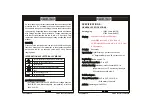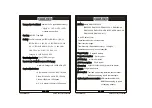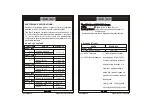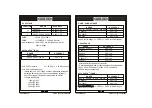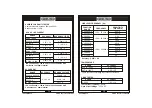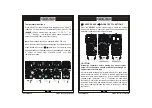
“KUSAM-MECO”
AN ISO 9001:2015 COMPANY
“KUSAM-MECO”
AN ISO 9001:2015 COMPANY
TAKE MEASUREMENTS CAREFULLY AND YOU’LL SPARE
YOUR METER AND YOURSELF, SOME PAIN.
Next, connect the test leads before you apply power to the circuit. To be
safe, start by setting your meter to its highest range first.
DMM users frequently burn their meters by trying to measure current the
same way as they measure voltage, Remember, you measure voltage
across a circuit, and current through a circuit. When you use the current
input, your DMM becomes a low impedance circuit element. If you
accidentally connect this low impedance path across your circuit, you’ll
effectively short-circuit it. You can, therefore send high current through
your meter and severely damage it. Unless the meter has a fused input,
you can even get an explosion or fire.
To prevent excess current from flowing through your meter, always
disconnect the test leads from the circuit under test whenever you change
DMM functions, Set your meter to the correct function, say current and its
highest range for the setting, say 20A.
Nearly every electrical engineer has a hand held Multimeter. We
sometimes take them for granted, until we damage them or “burn them
out”. If you incorrectly connect your DMM to a circuit or have the DMM on
wrong setting, you damage the meter and possibly hurt yourself. You can
also get into trouble if you try to measure the voltage across a charged
capacitor.
Even if you correctly insert your DMM into the circuit, you can still damage
your meter. Don’t try to measure current in excess of your meter’s
capacity. Handheld DMMs usually have a maximum current rating of 10A
or 20A.
If you are measuring current in industrial environment, you can easily
exceed those ratings. The best way to avoid damage is to use a clamp
meter or to connect a clamp attachment to your DMM.
1. SAFETY..............................................................................1
2. INTERNATIONAL ELECTRICAL SYMBOLS......................3
3. CENELEC DIRECTIVES....................................................3
4. SPECIFICATIONS..............................................................4
ELECTRICAL SPECIFICATIONS.......................................7
5. PRODUCT DESCRIPTION..............................................14
7. DATA LOGGING OPERATION.........................................29
8. MAINTENANCE...............................................................34
6. OPERATION.....................................................................17
9. TEST CERTIFICATE........................................................36
GENERAL SPECIFICATIONS............................................4
10. WARRANTY......................................................................37
TABLE OF CONTENTS
TITLE
PAGE




